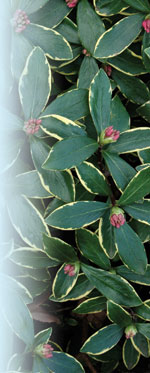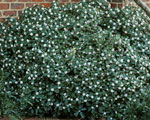Winter Daphne Tickles Spring’s Fancy
go.ncsu.edu/readext?232833
en Español / em Português
El inglés es el idioma de control de esta página. En la medida en que haya algún conflicto entre la traducción al inglés y la traducción, el inglés prevalece.
Al hacer clic en el enlace de traducción se activa un servicio de traducción gratuito para convertir la página al español. Al igual que con cualquier traducción por Internet, la conversión no es sensible al contexto y puede que no traduzca el texto en su significado original. NC State Extension no garantiza la exactitud del texto traducido. Por favor, tenga en cuenta que algunas aplicaciones y/o servicios pueden no funcionar como se espera cuando se traducen.
Português
Inglês é o idioma de controle desta página. Na medida que haja algum conflito entre o texto original em Inglês e a tradução, o Inglês prevalece.
Ao clicar no link de tradução, um serviço gratuito de tradução será ativado para converter a página para o Português. Como em qualquer tradução pela internet, a conversão não é sensivel ao contexto e pode não ocorrer a tradução para o significado orginal. O serviço de Extensão da Carolina do Norte (NC State Extension) não garante a exatidão do texto traduzido. Por favor, observe que algumas funções ou serviços podem não funcionar como esperado após a tradução.
English
English is the controlling language of this page. To the extent there is any conflict between the English text and the translation, English controls.
Clicking on the translation link activates a free translation service to convert the page to Spanish. As with any Internet translation, the conversion is not context-sensitive and may not translate the text to its original meaning. NC State Extension does not guarantee the accuracy of the translated text. Please note that some applications and/or services may not function as expected when translated.
Collapse ▲
Daphne odora ‘Aureomarginata’
JC Raulston Arboretum©
Daphne odora or winter daphne is a winter-flowering shrub that can withstand our fickle weather that may be balmy one day and downright cold the next. With its irresistible fragrance and sweet nosegay-type flower clusters, this plant brightens the winter landscape.
Winter daphne is an attractive, sparsely branched evergreen shrub, reaching about 3 feet in height and spread. It is grown for its wonderful fragrant tubular flowers and for its glossy foliage. The most common cultivar, ‘Aureomarginata’, has leaves with a narrow, irregular yellow margin. The plant produces terminal clusters of small flowers in February to early March that are crystalline white inside and deep purplish-pink outside. The flower of winter daphne is highly regarded for its strong scent, possibly the most delightful scent of any flower. Its scent is very similar to Osmanthus fragrans, which blooms in the fall. The flower clusters keep well in water, allowing one to appreciate the scent indoors. In the landscape, winter daphne is best located near a well-traveled path or an outdoor courtyard where its fragrance can be best appreciated.

Daphne odora ‘Aureomarginata’
JC Raulston Arboretum©
Winter daphne can be challenging to grow. It does not tolerate soils with poor drainage. Root rot diseases associated with poorly drained soils are likely the major cause of failure in the landscape. Ideally, a deep, well-drained woodland soil with plenty of humus is best for this shrub. Plant in slightly raised beds in amended soil to ensure adequate drainage. Winter daphne can tolerate full sun, but does best in a protected area providing moderate shade. The plant needs to be irrigated during periods of drought, but is considerably tolerant of drought episodes. It does not heal well from cuts into mature wood so it is best to avoid pruning. However, “pinching” or taking cuttings from the tips of long shoots on the current year’s growth makes the plant fuller and more floriferous.
At the JC Raulston Arboretum in Raleigh, find an old specimen of winter daphne in a protected site in the townhouse garden.


